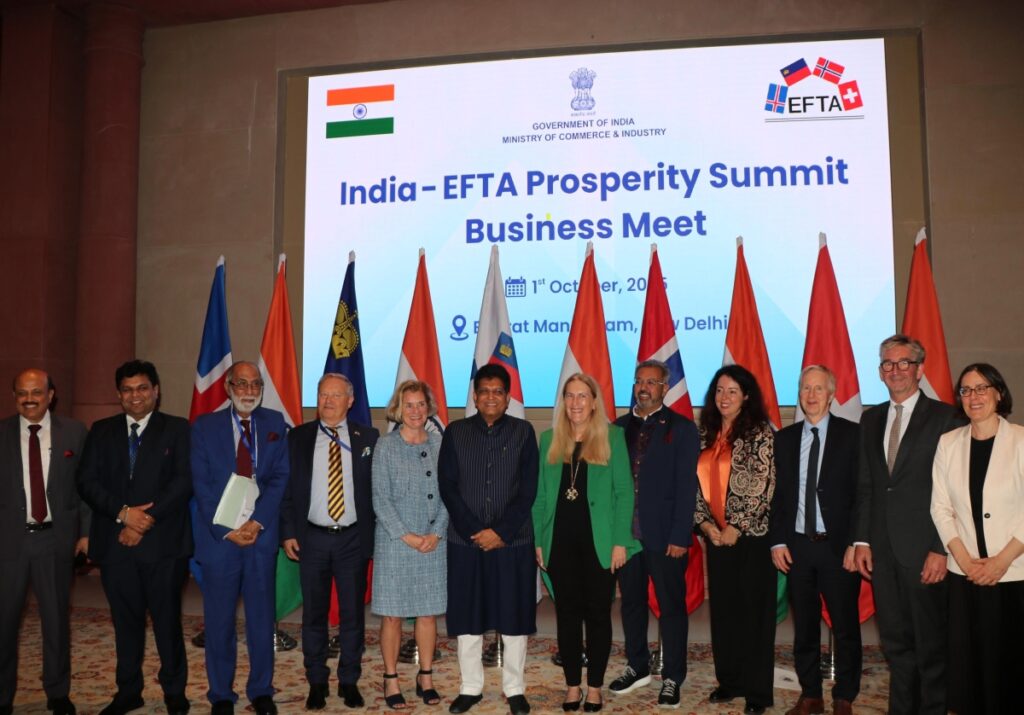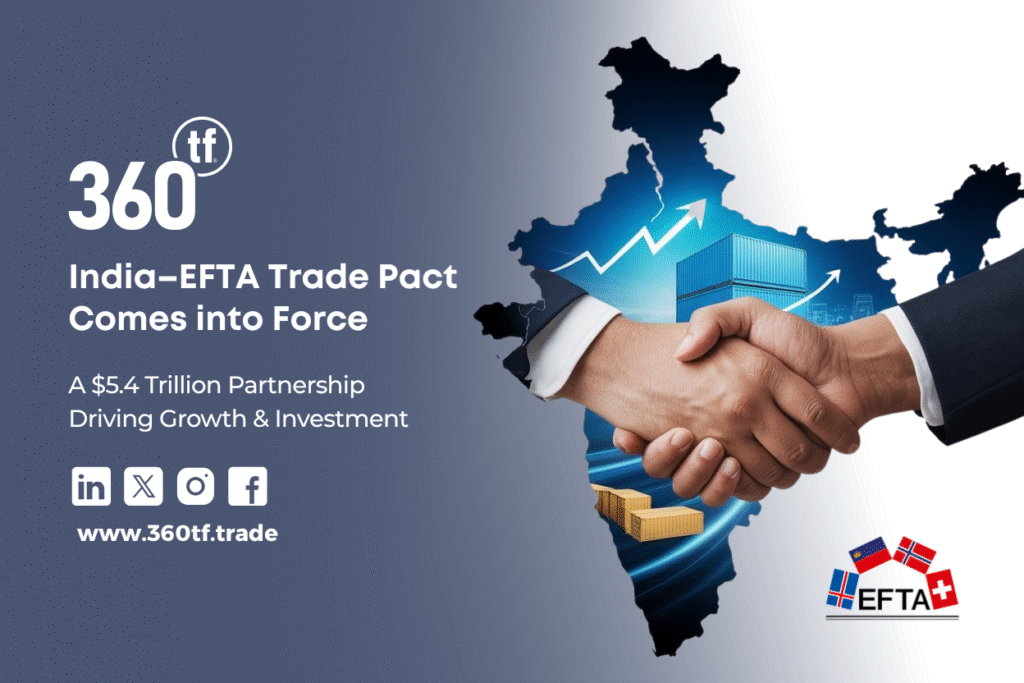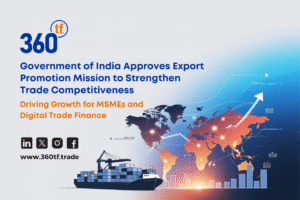Key Highlights
- Agreement between India and the EFTA States (Iceland, Liechtenstein, Norway, Switzerland) entered into force on 1 October 2025
- $100 billion investment commitment from EFTA countries over 15 years, with potential to create one million jobs in India
- Enhanced market access for Indian exports in pharmaceuticals, textiles, engineering goods, jewellery, and IT services
- EFTA gains improved access for precision instruments, machinery, watches, and high-value agricultural products
- Agreement covers goods, services, investment, intellectual property, sustainability, and government procurement

A Landmark Economic Milestone
The EFTA–India Trade and Economic Partnership Agreement (TEPA), which came into effect on 1 October 2025, marks a historic milestone in bilateral trade and investment. The pact strengthens economic ties between India, the world’s fastest-growing large economy, and the EFTA States Iceland, Liechtenstein, Norway, and Switzerland—renowned for innovation and trade excellence.
Together, these economies represent a combined GDP of USD 5.4 trillion, offering vast potential for mutual growth. The entry into force was celebrated at the Prosperity Summit in New Delhi, hosted by Shri Piyush Goyal, India’s Minister of Commerce & Industry, alongside senior EFTA representatives.
Trade Goals and Investment Scale
Under the EFTA–India Trade and Economic Partnership Agreement, both sides target USD 100 billion in investments in India over the next 15 years—expected to generate one million jobs by 2039. A dedicated investment facilitation mechanism will ensure accountability and progress tracking.
Trade between India and EFTA has shown consistent growth, especially in services, which have nearly doubled in the past decade. This partnership builds upon that positive trajectory, encouraging sustainable and balanced growth.
Market Access and Tariff Reductions
The EFTA–India Trade and Economic Partnership Agreement offers new opportunities for Indian exporters in pharmaceuticals, textiles, engineering goods, gems and jewellery, chemicals, and IT services. Key agricultural sectors like tea, spices, seafood, and processed foods will enjoy better access to EFTA markets.
For EFTA exporters, India will reduce or remove tariffs on major industrial goods, including pharmaceuticals, speciality chemicals, fertilisers, machinery, precision instruments, and watches. Agricultural products receive fair concessions while safeguarding domestic sensitivities.
Services, Skills Mobility, and Innovation
One of the strongest features of the EFTA–India TEPA is its focus on services and skills mobility. It simplifies access for professionals in IT, telecommunications, finance, maritime services, and mutual recognition of qualifications. This will ease the movement of skilled Indian professionals to EFTA countries.
The agreement also promotes innovation and co-production in sectors such as clean energy, precision manufacturing, and digital services, fostering technology transfer and research collaboration.
Sustainable and Strategic Gains
Sustainability is at the heart of the EFTA–India Trade and Economic Partnership Agreement. The pact integrates commitments to labour rights, climate change, and the UN Sustainable Development Goals (SDGs). It also enhances cooperation in intellectual property protection, standard harmonisation, and regulatory dialogue—ensuring a transparent environment for businesses.
For India, TEPA offers access to high-quality European investments and technology. For EFTA nations, it opens a strategic gateway to one of the world’s fastest-growing and most dynamic markets.
A New Era of Partnership
The EFTA–India Trade and Economic Partnership Agreement ushers in a new era of growth and collaboration. By combining India’s scale, workforce, and innovation with EFTA’s capital, expertise, and technology, the agreement aims to strengthen global supply chains, boost exports, and create shared prosperity.
Source: European Free Trade Association, Ministry of Commerce and Industry, India.




